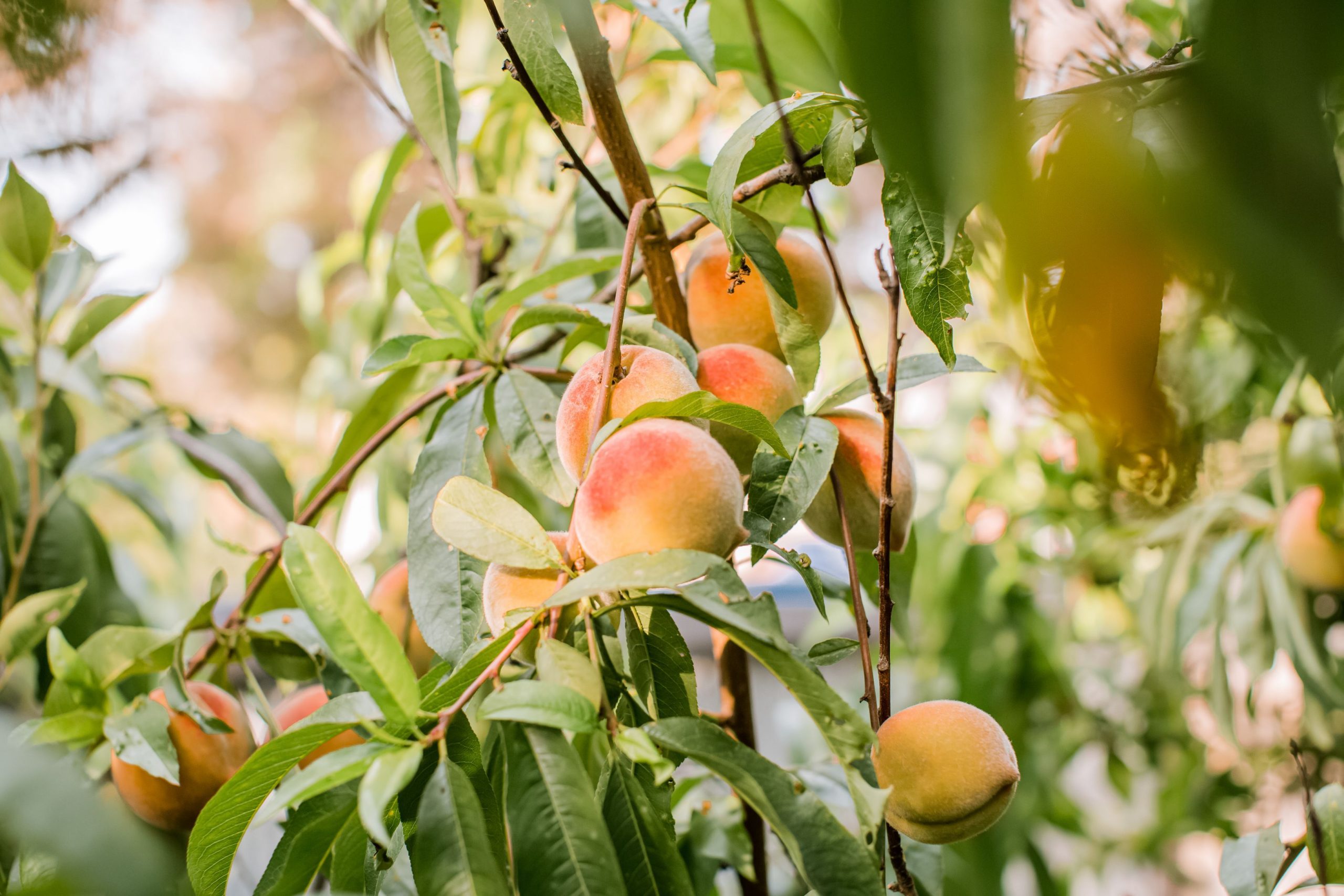I was working in the orchard and something caught my eye. In the middle of the orchard, one of the new baby trees had a blossom. The tree is still too young for me to leave it on there, but it made me happy to see it.
Peach trees are prized for their sweet juicy summer fruit. But did you know peach trees also produce showy pink flowers in spring? In this article we’ll take a look at peach tree flowers, pollination, and how the blooms become delicious peaches.
Peach trees (Prunus persica) produce light pink flowers in early spring before their foliage emerges The flowers have five petals and grow singly or in pairs along the branches
Peach blooms appear on branches that grew the previous summer. The flowers last for around two weeks, depending on the weather. Mild, calm weather extends the bloom time.
Peach trees need consistent winter chill hours below 45°F to stimulate flowering. Insufficient chill hours result in little to no bloom.
Do All Peach Tree Varieties Produce Flowers?
Yes, all cultivated peach trees produce light pink flowers in spring. However, some varieties bloom earlier or later than others.
Early-blooming peach varieties flower in late winter or very early spring. Mid-season bloomers open their flowers in early to mid-spring. Late-blooming peach trees flower in mid to late spring.
So while all peaches produce flowers, the bloom time varies. Early blooming types have the showiest floral display that contrasts brightly against the bare branches.
Pollinating Peach Tree Flowers into Fruit
Pretty peach blossoms serve an important purpose – pollination. For the flowers to develop into peaches later in summer, they must receive pollen from a compatible peach variety.
Peach trees are self-fertile, meaning they can pollinate themselves. However, production is greatly increased when cross-pollinated by a different variety.
Bees and other pollinating insects carry pollen from flower to flower. Rain, wind, or cold weather during blooming can prevent adequate pollination and fruit set.
It takes around 30-40 days after pollination for petite green peaches to form where the flowers were located. The tiny peaches grow rapidly over summer.
Caring for Peach Trees During Flowering
The flowering period is a critical time to safeguard peach tree health. Follow these tips:
-
Avoid pruning during flowering – this removes the fruiting wood.
-
Apply fertilizer and nutrients a few weeks before blooming.
-
Water trees regularly if rainfall is lacking; drought causes flower buds to abort.
-
Guard against late frosts using covers, wind machines, or heaters.
-
Control pests like aphids that can damage tender flowers and buds.
Stunning Uses for Peach Tree Flowers
While peach flowers are lovely in the landscape, you can also highlight their beauty through:
-
Cutting branches for floral arrangements indoors.
-
Floating a few flower sprigs in a fruit bowl or drinks.
-
Crafting wreaths, garlands, or decor pieces with the delicate blooms.
-
Infusing vinegars or honeys with the flowers.
Don’t overlook the charm of peach tree flowers – appreciate and preserve them while you can!
Common Questions About Peach Tree Flowers
How long do peach blossoms last?
Peach flowers last around 7-14 days, depending on weather conditions. Cool, calm weather extends bloom time. Wind, rain, or frost quickly finishes flowering.
What causes peaches not to flower?
Lack of adequate winter chill hours below 45°F is the most common reason for failure to bloom. Extreme late frost during flowering can also prevent fruit set. And over-pruning removes the flowering wood.
Do peach blossoms turn into peaches?
Yes, successfully pollinated peach flowers will develop into small green fruit about a month after blooming. The tiny peaches grow rapidly over summer into the mature fruit we eat.
Can you eat peach tree flowers?
Yes, the flowers are edible and make a pretty, delicate garnish. Avoid eating flowers that have been treated with pesticides. Cooking destroys potential toxins found in some flowers.
How do I get my peach tree to bloom more?
To maximize flowering: site in full sun, provide sufficient winter chill hours, avoid over-pruning, fertilize before blooming, water during dry spells, and protect from late spring frosts.
So Doesn’t That Mean Peaches Next Year?
Unfortunately, no. And we’ll need to cut off the blossoms again next year so that the tree has two full years of growth and no peaches. We want to focus on shaping the tree as mentioned in a previous post. The peach trees will be able to produce about 2025 percent of a full crop of peaches by the third year. That means that we will probably let the trees fruit in 2018 if they’re blooming. Usually, a crop is produced in the 204th year, and by that time, a peach tree should be fully grown and able to produce a full-size crop in the 205th year.
Wait, Why Cant You Leave It?
Peaches only grow on branches that are 1 year old. In this case, the tree used a piece of the 2015 tree to try to make a peach in 2016. I guess what I’m saying is that I shouldn’t be too terribly surprised to see the blossom. Too bad that we care more about growing strong, mature trees at this point in the tree’s life than we do about growing peaches. The baby tree wouldn’t have a strong root system or branches to help it grow a peach. Instead, it would use the few resources it has to make the peach. Having no peaches right now is better than having a strong tree that can start making peaches in two years.
Peach Trees’ Unique Structure: How They Grow, Bloom, and Fruit
- The Ultimate Guide to Growing Strawberries in Raised Beds - August 8, 2025
- No-Dig Garden Beds: The Easiest Way to Grow a Beautiful Garden - August 6, 2025
- How to Protect and Preserve Wood for Raised Garden Beds - August 6, 2025

